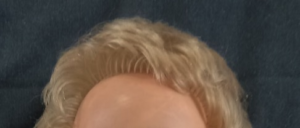
Let’s take a look at how to get a natural looking head of hair and what you can do to achieve the look of your dreams!Looking at those celebrity heads of hair, it’s clear that some hair transplants look more natural than others. But what can you do to achieve the look you’ve longed for?We’ve seen the consequences of procedures carried out by unqualified surgeons at ‘budget’ clinics overseas, and some results are not good.That doesn’t mean that all overseas clinics are bad, it just means that you need to do your research and choose your surgeon carefully. The old saying “buyer beware’’ comes into play here!Fortunately, with new modern techniques, and in the hands of an expert surgeon, it’s possible to achieve natural-looking results. Gone are the days of doll-like hair that patients saw in the 70s and 80s where sections of hair called ‘hair plugs’ were transplanted to the thinning area. Over a period of time, these hair plugs became quite noticeable These days, to get a more natural result, most surgeons transplant groups of 3 or 4 follicles at a time and using the FUE method a natural looking hairline can be achieved.Thanks to these advances, the results can look so natural that it would be hard to tell that you’ve had anything done.
Gone are the days of doll-like hair that patients saw in the 70s and 80s where sections of hair called ‘hair plugs’ were transplanted to the thinning area. Over a period of time, these hair plugs became quite noticeable These days, to get a more natural result, most surgeons transplant groups of 3 or 4 follicles at a time and using the FUE method a natural looking hairline can be achieved.Thanks to these advances, the results can look so natural that it would be hard to tell that you’ve had anything done. The surgery begins with your surgeon removing the healthy hairs from the doner area.To give you natural-looking results, your surgeon may remove the healthy hairs by either cutting a strip of skin with healthy hairs from your scalp (FUT) or removing individual hairs follicles a few at a time (FUE)The second option (FUE) is more widely used and preferred by surgeons as it avoids leaving a long, narrow scar on your scalp, which can be beneficial if you’d prefer a close-shaven haircut further down the line.But, although the transplant does take a lot longer than using the FUT method, the results look more natural as the surgeon has greater control over the placement of the individual hair follicles.
The surgery begins with your surgeon removing the healthy hairs from the doner area.To give you natural-looking results, your surgeon may remove the healthy hairs by either cutting a strip of skin with healthy hairs from your scalp (FUT) or removing individual hairs follicles a few at a time (FUE)The second option (FUE) is more widely used and preferred by surgeons as it avoids leaving a long, narrow scar on your scalp, which can be beneficial if you’d prefer a close-shaven haircut further down the line.But, although the transplant does take a lot longer than using the FUT method, the results look more natural as the surgeon has greater control over the placement of the individual hair follicles.
 Gone are the days of doll-like hair that patients saw in the 70s and 80s where sections of hair called ‘hair plugs’ were transplanted to the thinning area. Over a period of time, these hair plugs became quite noticeable These days, to get a more natural result, most surgeons transplant groups of 3 or 4 follicles at a time and using the FUE method a natural looking hairline can be achieved.Thanks to these advances, the results can look so natural that it would be hard to tell that you’ve had anything done.
Gone are the days of doll-like hair that patients saw in the 70s and 80s where sections of hair called ‘hair plugs’ were transplanted to the thinning area. Over a period of time, these hair plugs became quite noticeable These days, to get a more natural result, most surgeons transplant groups of 3 or 4 follicles at a time and using the FUE method a natural looking hairline can be achieved.Thanks to these advances, the results can look so natural that it would be hard to tell that you’ve had anything done.Choosing the Very Best Clinic and Surgeon
Your hair transplant results will entirely depend on the quality of the procedure and the surgeon you’ve chosen.You need to choose an experienced surgeon who understands hair loss and performs hair transplants regularly.While modern advances are giving patients natural-looking results, the outcome still depends largely on the surgeon you’ve selected.No amount of technology, however advanced, can replace the skills of a knowledgeable surgeon.You can only work with what you’ve got
All hair transplants involve moving hair from a part of the scalp that has hair (the doner area) to a part that doesn’t (the recipient area).The two most widely used methods of hair transplant are,*Follicular Unit Extraction (FUE) and *Follicular Unit Transplantation (FUT) FUE (Follicular Unit Extraction) involves a small number of hair follicles being removed from the doner area and then transplanted to the balding or thinning area.FUT (Follicular Unit Transplantation) or ‘STRIP’ consists of the removal of healthy hair follicles in small strips from a donor area.As both methods require removal of hair from a doner area, the end result will depend on the quality of that area.When you attend your initial consultation your surgeon will tell you whether your donor area is of good enough quality and will give you a realistic idea of the results you can expect.Make sure when you attend your consultation, that you ask questions about realistic goals and what you can expect given the condition of your donor area. Ask questions about the condition of the donor follicles and how well they can be expected to take when transplanted.Key Takeaway: Chose your surgeon carefully. Do your due diligence as the results of your hair transplant are entirely in their hands. Attend a consultation, no ‘zoom call’ will ever be good enough and cannot assess your needs adequately. Ask questions to attain a realistic idea of the end result.What happens during a hair transplant?
A hair transplant usually takes between four and eight hours. however, you may need to return for a few hours the next day if you’re have a large amount of hair transplanted.Patients usually remain awake during the entire surgery and need only a local anaesthetic to makes the scalp numb. The surgery begins with your surgeon removing the healthy hairs from the doner area.To give you natural-looking results, your surgeon may remove the healthy hairs by either cutting a strip of skin with healthy hairs from your scalp (FUT) or removing individual hairs follicles a few at a time (FUE)The second option (FUE) is more widely used and preferred by surgeons as it avoids leaving a long, narrow scar on your scalp, which can be beneficial if you’d prefer a close-shaven haircut further down the line.But, although the transplant does take a lot longer than using the FUT method, the results look more natural as the surgeon has greater control over the placement of the individual hair follicles.
The surgery begins with your surgeon removing the healthy hairs from the doner area.To give you natural-looking results, your surgeon may remove the healthy hairs by either cutting a strip of skin with healthy hairs from your scalp (FUT) or removing individual hairs follicles a few at a time (FUE)The second option (FUE) is more widely used and preferred by surgeons as it avoids leaving a long, narrow scar on your scalp, which can be beneficial if you’d prefer a close-shaven haircut further down the line.But, although the transplant does take a lot longer than using the FUT method, the results look more natural as the surgeon has greater control over the placement of the individual hair follicles.The Prep
Before your surgeon can transplant the hairs, technicians need to prepare the removed hairs and the surgeon must get your scalp ready for the transplant.Using a micro punch tool, they will remove follicles from your scalp. Your surgeon will then make a series of tiny incisions with a needle or other small, sharp tool where the extracted follicles will be inserted. They’ll insert the follicles into the incisions.Once all the hairs have been transplanted, your scalp will be bandaged, and you will be given instructions for at-home care.When do patients see results from a hair transplant?
You are likely see results six and nine months after surgery. For some patients it can take up to 12 months.It’s important to know that between two and eight weeks after the surgery, the transplanted hair will fall out. This is normal.By the twelfth week, the hair may look rather thinner than before you had the transplant, but again, this is normal.Am I a good candidate for a hair transplant?
For a good hair transplant outcome you need two things.- A good amount of healthy hair on your scalp, (usually the back of the head), that can be transplanted to the area that needs hair
- The ability to grow hair on the balding area of your scalp

